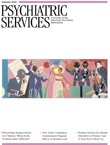News Briefs
Guiding and monitoring parity implementation: On January 1, 2010, new rules included in the Federal Mental Health Parity and Addiction Equity Act went into effect for businesses with more than 50 employees that sponsor plans and offer mental health and addiction coverage. A 30-page research brief developed by the Partnership for Workplace Mental Health describes how employers can manage the benefit to optimize quality and value, structure benefits to comply with the law, and integrate the new benefit with existing employer health programs. Brief case studies of eight organizations that have had positive parity experiences, including DuPont, The Houston Chronicle, and the State of Ohio, are presented. Successful Employer Implementation of the Federal Mental Health Parity and Addiction Equity Act is the third brief in the Research Works series. The Partnership for Workplace Mental Health is a program of the American Psychiatric Foundation and its more than 35 employer partners. The brief is available on the Partnership's Web site at www.workplacementalhealth.org . In addition, the American Psychiatric Association's Office of Healthcare Systems and Financing has created a Web site—Mental Health Parity Watch—to ensure that health insurers are providing benefits in compliance with the law. As noted on the site's home page, "The only way we can know whether the law is being implemented appropriately is by hearing from patients and physicians about specific concerns they have with a group health plan's mental health coverage relating to the Parity Act's requirements." The site presents information to help understand the law and provides instructions for submitting a concern ( www.mentalhealthparitywatch.org ).
National data on rates of common mental disorders among youths: Only about half of American children ages eight to 15 who have certain mental disorders receive professional services, according to a nationally representative survey, which also provides data on the prevalence of six common disorders: generalized anxiety disorder, panic disorder, eating disorders (anorexia and bulimia), depression, attention-deficit hyperactivity disorder (ADHD), and conduct disorder. The youths were interviewed directly, and parents or caregivers also provided information. Overall, 13.0% of respondents met criteria for at least one of the disorders in the past year, and 1.8% had more than one disorder. Youths of lower socioeconomic status were more likely to report any disorder, particularly ADHD, whereas those of higher status were more likely to report having an anxiety disorder. Mexican Americans had significantly higher rates of mood disorders than whites or African Americans, but overall few ethnic differences in rates emerged. Overall, 55% of those with a disorder had consulted a mental health professional. African Americans and Mexican Americans were significantly less likely than whites to seek treatment. The results are part of the National Health and Nutrition Examination Survey, a collaboration between the National Institute of Mental Health and the National Center for Health Statistics of the Centers for Disease Control and Prevention. The survey was conducted from 2001 to 2004 and had 3,042 participants. These and other findings are available in the January issue of Pediatrics.
Portrait of the American family caregiver: In the past 12 months, an estimated 65.7 million people in the United States—29% of the adult population—have served as unpaid family caregivers to an adult or a child, according to a new report, Caregiving in the U.S. 2009. The percentage does not appear to have changed significantly since the first such report in 2004. Most caregivers are women (66%), the average age is 48, and most (57%) are employed. The main reasons people need care are old age (12%), Alzheimer's disease (10%), mental or emotional illness (7%), cancer (7%), heart disease (5%), and stroke (5%). Caregivers provide an average of 20 hours of care per week, and caregiving lasts an average of 4.6 years. One in seven caregivers provides care over and above regular parenting to a child with special needs. Attention-deficit disorder and attention-deficit hyperactivity disorder account for the greatest proportion of the care, followed by autism, mental or emotional illness, and developmental delay or mental retardation. The 79-page report, which was funded by the MetLife Foundation and published by the National Alliance for Caregiving (NAC) in collaboration with AARP, is based on interviews with 1,480 randomly chosen caregivers. It is available on the NAC Web site at www.caregiving.org .



